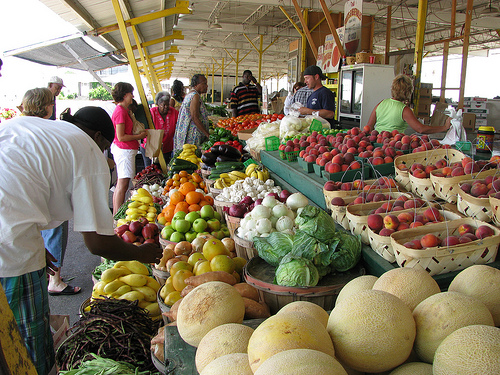Farmers markets sometimes get a bad rap for catering to the moneyed set, as though only the well-to-do like to buy their produce in a pleasant, social, outdoor environment, direct from the source.

It turns out that’s all a bunch of compost. Low-income shoppers are actually the real farmers-market power users, buying bigger shares of their groceries at the markets than at other stores compared to middle- and high-income shoppers, according to a new report from the Project for Public Spaces.
The report looked at eight markets across the country in low-income neighborhoods with otherwise broad differences in demographic makeup. “[A]lmost 60% of farmers market shoppers in low-income neighborhoods believed their market had better prices than the grocery store,” the report states.
The main barrier to low-income shoppers patronizing farmers markets? Just basic information. Researchers found that shoppers often didn’t use their food-stamp benefits even though markets accept them, and shoppers didn’t know where markets were or when they were open.
If farmers markets embrace their low-income shoppers and just let them know what’s up, everyone could win.



